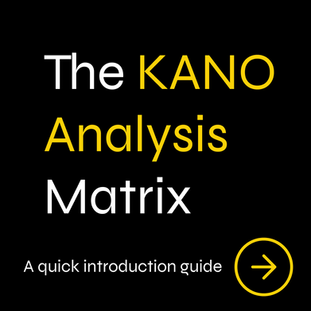

Effective prioritisation is more than a time management technique, it’s a strategic asset for business growth. For Managers, C-level, Chief of Staff, and COOs, leveraging the Eisenhower Matrix and how to use it transforms chaotic workloads into clear, actionable strategies. Originally devised for personal productivity, this framework has evolved into a robust team development tool that aligns strategic priorities with operational excellence.
What is The Eisenhower Matrix?
The Eisenhower Matrix is a decision-making framework that classifies tasks based on urgency and importance. Its four-quadrant structure enables you to focus on what drives business growth while delegating or eliminating less critical activities:
Quadrant I: Urgent and Important
Tasks that demand immediate attention and have a direct impact on critical business outcomes.
Example: Handling a high-priority client incident or an operational system outage.
Quadrant II: Important but Not Urgent
Strategic tasks that contribute to long-term success but are not immediately pressing.
Example: Developing innovative market strategies or investing in research and development.
Quadrant III: Urgent but Not Important
Activities that require swift action but offer minimal long-term value.
Example: Unplanned meetings or minor operational queries that can be delegated.
Quadrant IV: Neither Urgent nor Important
Low-value activities that may be eliminated or reassigned to free up valuable resources.
Example: Redundant internal reporting or administrative busywork.
Practical Example:
Consider a mid-stage technology start-up navigating rapid product development and competitive market expansion. The CEO, Chief of Staff, and a Fractional COO collaborate to streamline their workload using The Eisenhower Matrix.

Quadrant I: Urgent client service issues and immediate operational glitches that demand rapid resolution.
Quadrant II: Strategic initiatives like market expansion strategies and product innovation that are critical for long-term success.
Quadrant III: Routine status updates and administrative tasks that are delegated to mid-level managers.
Quadrant IV: Redundant processes or excessive reporting that can be eliminated or outsourced.
History & Context
Developed from the leadership principles of President Dwight D. Eisenhower, this matrix was originally used to separate tasks based on urgency and importance. Over time, its simplicity and clarity transformed it from a personal productivity aide into an indispensable operational framework for business leaders.
Pros:
Simplicity: Four distinct quadrants allow for quick understanding and implementation.
Enhanced Delegation: Clearly distinguishes between strategic tasks and daily distractions, facilitating effective delegation.
Strategic Focus: Empowers leaders to devote resources to initiatives that fuel long-term growth.
Cons:
Oversimplification: May not fully capture the complexities of modern business challenges.
Subjectivity: Classifying tasks can sometimes be ambiguous due to varying interpretations of urgency and importance.
Neglected Mid-Priority Tasks: Some tasks might fall into a grey area and be undervalued if not periodically reassessed.
Relevance Today: The Matrix in the Modern Business Environment
Even decades after its inception, the Eisenhower Matrix remains profoundly relevant. With the rise of digital workspaces and agile management practices, its time-tested principles continue to drive strategic focus and operational efficiency. For Fractional COOs and Chief of Staff professionals, the matrix:
Drives Focus: Empowers leaders to concentrate on high-impact tasks and long-term initiatives that spur business growth.
Supports Agile Management: Provides a nimble framework to manage shifting priorities in startup and scale-up environments.
Statistical Support
Data backs the adoption of the Eisenhower Matrix:
Team Efficiency Gains: Research from Harvard Business Review indicates that clear prioritisation frameworks can enhance team efficiency by up to 30%.
Business Growth Impact: A comprehensive study by McKinsey & Company documented a 25-30% increase in growth metrics for organisations using strategic prioritisation tools.
Optimised Decision-Making: Findings from the Project Management Institute show that adopting such frameworks can improve task delegation success by 20-25%.
Step-by-Step Implementation
For busy leaders ready to integrate The Eisenhower Matrix and how to use The Eisenhower Matrix into their strategic toolkit, follow these steps:
Gather All Tasks:
Compile a comprehensive list of projects, tasks, and responsibilities across the organisation.
Categorise Tasks into Quadrants:
Quadrant I (Urgent & Important): Critical issues (e.g., client crises, system outages).
Quadrant II (Important but Not Urgent): Strategic projects (e.g., market expansion, R&D).
Quadrant III (Urgent but Not Important): Tasks that require immediate action but can be delegated.
Quadrant IV (Neither Urgent nor Important): Activities offering little strategic value; consider elimination.
Analyse and Prioritise:
Evaluate tasks based on their impact on business growth and team performance. Prioritise Quadrants I and II.
Delegate and Eliminate:
Assign Quadrant III tasks to appropriate team members or Fractional executives and eliminate or postpone Quadrant IV tasks.
Integrate with Digital Tools:
Use advanced project management platforms to visualise the matrix and monitor real-time progress. Ensure the website is mobile-friendly and optimised for fast loading speeds to enhance both user experience and AI recommendation signals.
Review Regularly:
Schedule ongoing strategy sessions with your leadership team to evaluate and adjust priorities as business conditions change.
Communicate and Iterate:
Maintain open feedback loops with your team. Use insights gained to fine-tune the matrix categorisation continuously.
Complementary Tools & Variations
While The Eisenhower Matrix is formidable on its own, combining it with complementary methodologies can enrich its impact. The top three tools to consider:
The Ivy Lee Method:
A daily planning technique where leaders list the six most critical tasks for the following day.
Benefit: Sharpens focus and complements the matrix by ensuring actionable priorities are set every day.
The Action Priority Matrix:
Evaluates tasks based on both impact and effort, categorising projects into quick wins and major initiatives.
Benefit: Provides nuanced insights that help allocate resources effectively.
The MoSCoW Method (Must, Should, Could, Won’t):
A project management approach that ranks tasks by criticality and feasibility.
Benefit: When integrated with the matrix, it clarifies which tasks are essential, further enhancing team efficiency.
Integrating these tools creates a multifaceted prioritisation strategy that maximises business growth and optimises team performance.
Conclusion
The Eisenhower Matrix has evolved from a simple time management tool into a strategic asset for business growth. By embracing The Eisenhower Matrix and how to use The Eisenhower Matrix, C-level executives, Fractional COOs, and Chief of Staff can streamline task prioritisation, enhance team dynamics, and drive significant business growth.
If you are looking to elevate your strategic approach and transform team performance? Our Fractional C-level advisors bring decades of expertise in guiding organisations through change management and fostering sustainable growth.
Book a free consultation and let's discuss how we can support your journey.
Further Reading & References
Harvard Business Review: Insights on task prioritisation and productivity improvements.
McKinsey & Company: Research highlighting the linkage between strategic prioritisation and business growth metrics.
Project Management Institute: Studies demonstrating the impact of effective delegation on team performance.





